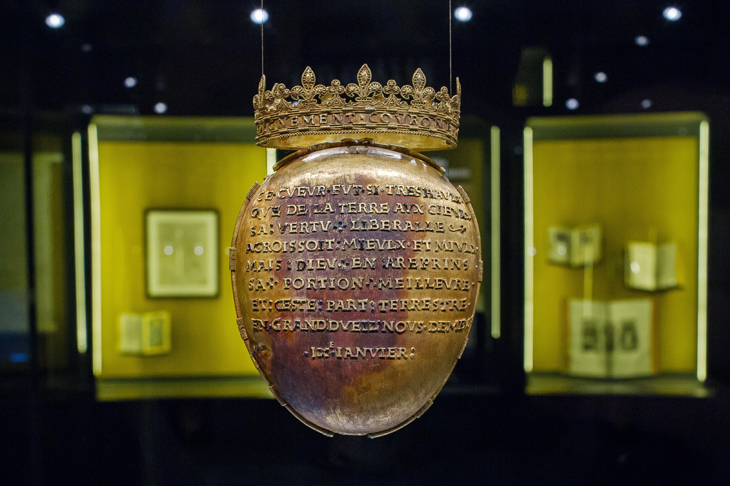Two recent museum thefts can be taken to illustrate the thinking behind such crimes. One, in Nantes, saw thieves snatch a 16th-century solid gold reliquary containing the preserved heart of a French queen from the Thomas-Dobrée museum. The other, in Bath, involved the theft of Chinese jade and gold from the Museum of East Asian Art.
The Nantes theft was carried out in the night between 13 and 14 April, with the thieves breaking in through a window. Although the loss of the heart of Anne of Brittany, which had only gone back on display on the Tuesday of the preceding week, attracted the majority of attention, the thieves also took a range of gold coins and medals and a gilt sculpture of a Hindu deity – the latter presumably in the mistaken belief that it too was gold. This theft appears to be a prime example of opportunism. The return to display of the reliquary presumably drew the attention of the thieves and they then took the first available opportunity to take it, and other items that appeared valuable to them at the same time. Little planning was presumably carried out if amongst their haul of gold was a gilt sculpture of far lower financial value. The fact that the reliquary was subsequently buried just outside Saint Nazaire (a nearby town), from where it was recovered after police were led to it following two arrests, indicates that it is unlikely that the thieves had thought beyond the initial ‘smash and grab’ element of their crime and had not considered how to dispose of their haul.
In contrast – although superficially similar in that the thieves broke in through a window during the early hours of the morning – the theft from the Museum of East Asian Art in Bath on 17 April appears to have been highly targeted. The pieces taken seem to have been selected based on their quality and cultural significance, rather than simply their material, which ranged from jade to soapstone to zitan wood, or obvious financial value. The thieves made their selection of objects rapidly and fled the scene in under five minutes before the police could arrive, indicating that significant planning must have gone into the robbery. Again in contrast to the Nantes theft, as yet it appears that none of the material stolen has been recovered, nor have any arrests been made.
This is not the first time that a European museum has suffered from what appears to be a targeted theft of Chinese material. Similar thefts have taken place over the last decade in Durham, at the Fitzwilliam in Cambridge, and at the Château de Fontainebleau. This kind of crime appears to be carried out with a specific view to then selling the pieces stolen to the Chinese market where it is relatively easy to find a buyer, and the chances of a piece being identified are far lower than if it were offered to the Western art market.
Sadly, museums are particularly vulnerable to targeted thefts such as this. Their very nature, with publicly listed catalogues of their collections (the full collection of the Museum of East Asian Art is available online), and outreach programs to ensure that people are aware of their existence and holdings, means that for those who are seeking particular types of item and are prepared to secure them through illicit means they are almost a shop window for criminals. It is essential that museums resist the temptation to keep their collections private, but their public nature does mean that it is also essential to factor in security when planning exhibitions, building works, and storage.
Equally, museums remain vulnerable to opportunistic theft of pieces on display such as appears to have been the case in Nantes. It is rare, but criminals see the pieces within museums as valuable, and thus worth stealing if an opportunity to do so arises. As in this case though, they rarely have a plan for how to turn that value into cash, and thus end up hiding the items when it becomes clear that they are not as easy to fence as they might have hoped.
Ultimately, for the general public, historians, and museums themselves, the outcomes of these thefts are often sadly indistinguishable: the loss of items integral to their collections. Tackling museum theft is dependent upon financial resources for security and policing, but for museums, especially those with lower budgets, an increased awareness of the types of items likely to be liable to targeted theft, and of the risks of opportunistic theft prompted by publicity, is well worth keeping in mind.
James Ratcliffe is director of recoveries & general counsel at the Art Loss Register, London.



